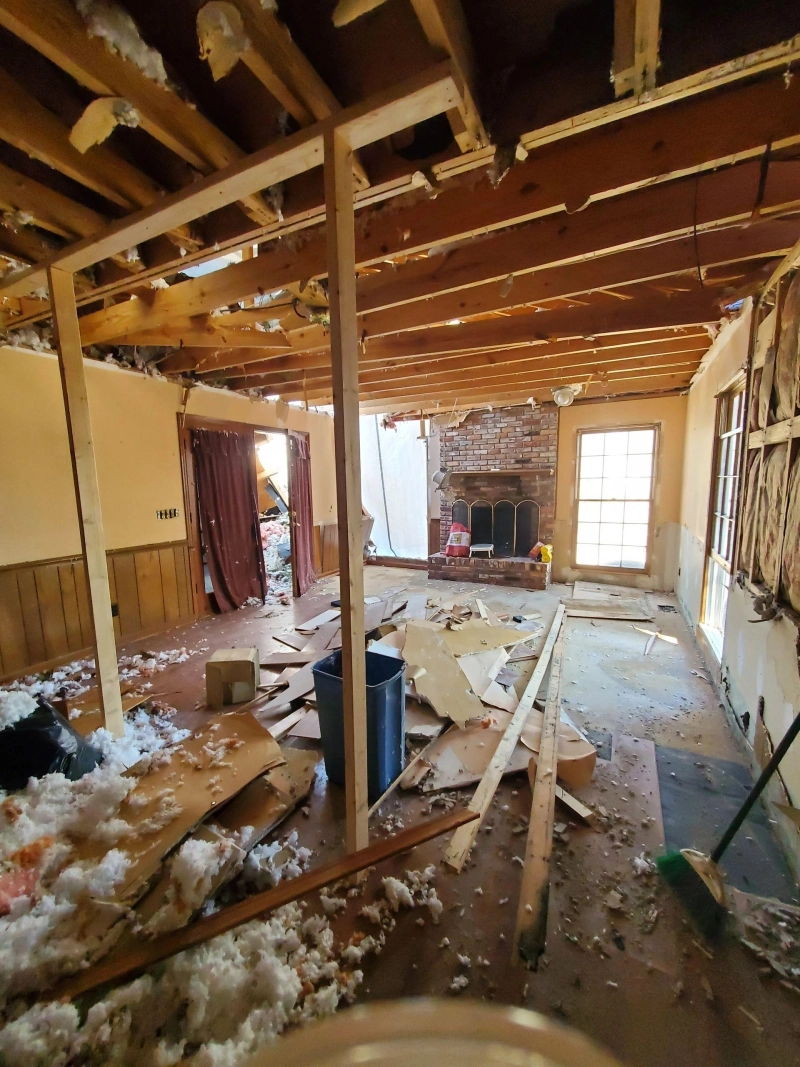Flooding damage is more than just a structural issue—it poses serious health risks for homeowners and businesses. When water enters a property, it can create the perfect environment for mold, bacteria, and other harmful contaminants to thrive. Without immediate action, the damage can escalate, leading to long-term hazards that compromise both property integrity and human health. Understanding how flooding damage affects indoor environments and knowing the importance of swift restoration can help prevent devastating consequences.
Immediate Health Hazards After a Flood
Biohazard Concerns: Bacteria, Viruses, and Mold
Floodwaters often carry harmful pathogens that pose significant health risks. Contaminated water can introduce bacteria such as E. coli and Salmonella, along with viruses that cause gastrointestinal and respiratory infections. Exposure to floodwater, either through skin contact or inhalation of airborne particles, can lead to serious illnesses.
Additionally, flooding damage creates an ideal breeding ground for mold. Within 24 to 48 hours, mold spores begin to grow on damp surfaces. Inhaling mold spores can trigger allergic reactions, respiratory distress, and worsen conditions like asthma. Immediate action is necessary to reduce the spread of mold and other hazardous microorganisms.
The Impact of Stagnant Water on Air Quality
Standing water left after a flood can rapidly deteriorate indoor air quality. As water sits, it releases moisture into the air, increasing humidity levels and creating an environment where mold and mildew flourish. Musty odors become apparent, signaling the growth of fungi that can trigger respiratory problems.
Moreover, floodwaters may contain chemical contaminants from household cleaning agents, pesticides, or sewage backups. These pollutants, when evaporated into the air, can cause dizziness, headaches, and long-term respiratory distress. Ensuring proper ventilation and dehumidification after flooding damage is essential for maintaining safe indoor air quality.
Long-term Health Risks
Mold Exposure and Respiratory Issues
One of the most severe long-term consequences of flooding damage is mold infestation. Once mold colonies take hold, they can spread quickly throughout a property, embedding themselves in drywall, carpets, and insulation. Mold exposure is linked to various health problems, including:
- Chronic coughing and wheezing
- Nasal congestion and sinus infections
- Skin irritation and allergic reactions
- Aggravation of asthma and other respiratory conditions
Without professional mold remediation, these health issues can persist and worsen over time. The longer a property remains untreated, the greater the risk of mold-related complications.
Risks from Untreated Water Damage
Beyond mold, lingering water damage can weaken the structural integrity of a building. Wood rot, warping floors, and compromised foundations can develop, increasing safety risks for occupants. Additionally, damp environments encourage the proliferation of dust mites and pests, which can further contribute to respiratory ailments and allergies.
Unchecked moisture also promotes bacterial growth in hidden areas, such as behind walls and under flooring. Over time, these unseen threats can contribute to sick building syndrome, a condition where occupants experience persistent symptoms like headaches, fatigue, and respiratory discomfort due to indoor air contamination.
Why Timely Restoration is Critical
Preventing Further Health Risks Through Fast Restoration and Cleanup
Acting quickly after flooding damage is crucial to preventing health hazards. Restoration efforts should begin as soon as possible to:
- Remove contaminated water and debris
- Dry out the affected areas to prevent mold growth
- Disinfect surfaces to eliminate harmful pathogens
- Repair structural damage to maintain the safety of the property
A thorough cleanup process ensures that secondary damage does not occur, preserving both the property and the well-being of its occupants. Professional restoration services have the necessary expertise and equipment to handle the complexities of water damage, from advanced drying techniques to specialized sanitation procedures.
Expertise in Mold Remediation and Water Damage Repair
Professionals in water damage restoration understand the urgency of mitigating flooding damage. They assess the extent of the destruction, identify hidden moisture pockets, and implement targeted strategies to restore the property efficiently. With expertise in mold remediation, air quality control, and structural repairs, restoration specialists ensure that properties are safe for occupancy.
Through advanced dehumidification, thermal imaging, and microbial treatments, experts can eliminate moisture at its source and prevent long-term health risks associated with flooding damage. By trusting professionals, property owners can have peace of mind knowing that their environment is thoroughly cleaned and restored.
Conclusion
Flooding damage poses both immediate and long-term threats to property and health. Contaminated water introduces bacteria, viruses, and mold, while stagnant moisture deteriorates air quality and structural integrity. The health risks—ranging from respiratory illnesses to toxic mold exposure—make swift restoration essential.
By addressing water damage quickly, eliminating mold growth, and restoring indoor air quality, property owners can protect their investments and ensure a safe living environment. Relying on professional restoration services ensures thorough cleanup, minimizing health hazards and preserving the property for years to come. If flooding damage occurs, acting fast is the key to preventing lasting consequences and safeguarding the well-being of everyone affected.


